Simone de Groot lives and works in Haarlem, Netherlands. She creates comforting installations and sculptures using soft fabrics such as fleece, fiberfill and felt. In this interview with Simone she talks about her need for seclusion, her determination to go to art school from an early age and how she works without compromise.
Softness and stillness
TextileArtist.org: What initially captured your imagination about textile art?
Simone de Groot: I am not so much interested in textiles because of the crafts, but because of the connotations this material has as sculptural means. When I started working with textiles, back in art school in the early nineties, I used textiles and embroidery as a reference to the feminine and to myself as a female artist. I also made sculptures of wax, plaster and found materials. There were several female artists that I related to at that time: Rosemarie Trockel, Rebecca Horn and Louise Bourgeois.
Over the years, the tactility and the consoling aspect of soft fabric became more and more important in my work, as well as the architectural application of fabrics. In my installations and sculptures I use fleece, fiberfill, (self-made) felt and other soft fabrics to create a tactile and soft surface that even absorbs sound. For me, textile is the best medium to express softness and stillness in my work. The sculptures may show dramatic or tragic subjects, but because of the soft fabrics I use, they offer consolation at the same time.
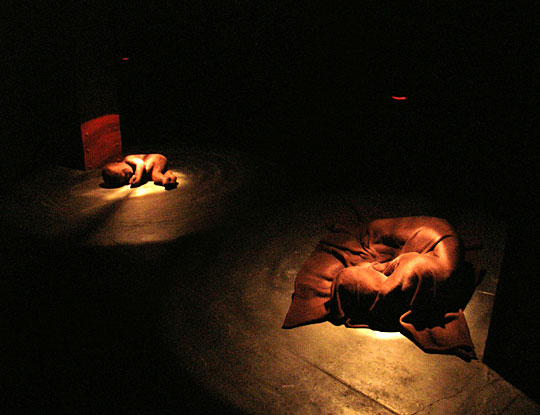
What was your route to becoming an artist? (Formal training or another pathway?)
When I was about 6 years old, I already told people I wanted to go to art school. I was always drawing and painting, and somebody had probably told me that if you wanted to be an artist, you had to go to art school. My parents supported my choice, but, out of worries about my financial future, encouraged me to register with the graphic design department.
Within the first year, I turned out to be too stubborn to fulfill the assignments given at ‘graphic design’ and switched to ‘autonomous painting’. Over the following academic years my paintings turned to shaped canvases, then changed from painted canvases to chucked textiles, which turned into filled up cushion-paintings. Finally I took a cushion off its frame and my first textile object was born.
I graduated from the painting department with sculptures, most of them made with fabric. This was 1993.
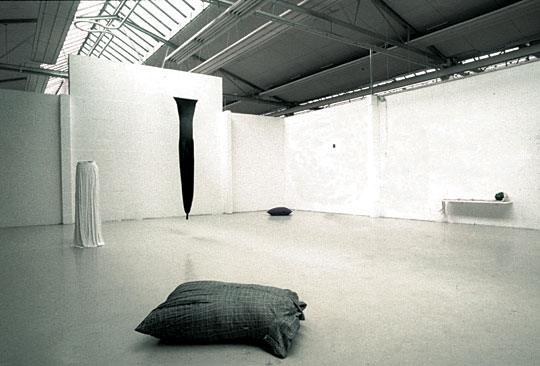
As for the finances, my parents were right, of course. So next to my art career, I had a side job as an office manager for various design companies for almost eighteen years. In 2011 I couldn’t combine my part time job with my artwork any longer. Since then I’ve been able to create a small income out of commissions, sales, curating and teaching.
What is your chosen medium and what are your techniques?
The medium and techniques I use are subject to what I want to express, to the location or the aim of the project. Textiles such as fleece, felt or fiberfill fit my need for abatement, but I also work with other fabrics, lace, elastic bands, wood, polyester and wall drawings.
No matter what medium I use, the tactile feeling is always present. I construct most of my sculptures in chicken wire which I cover with paper-maché and finally glue pieces of felt or fleece on them. The seams are cut with scissors and glued together, without threads or embroidery. I am very strict on where I want the seams: they are like lines in a drawing. They follow the folds in my sculptures, like at my ‘Nonnenberg’ (Nun mountain) – a sculpture consisting of five separate pieces that fit together like a puzzle.
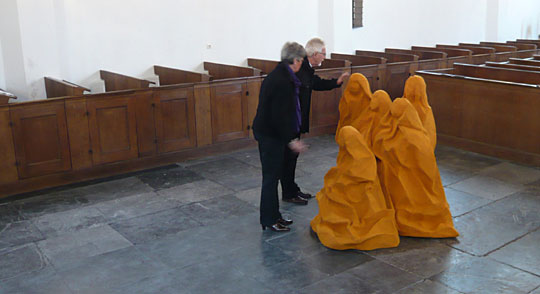
Absolute seclusion
Tell us a bit about your process and what environment you like to work in?
When developing new work I flourish in a secluded space without distraction. My current studio has the windows partly taped up with window film to keep my gaze on the interior. Sitting at my desk I can only see tree tops and sky. My previous studio was located in a fortress with one meter thick concrete walls, so that was absolute seclusion.
At this first conceptual stage, I empty my studio as much as possible to become a ‘tabula rasa’ and I surround myself with books and internet-footage for research and inspiration. In later stages I enjoy brainstorming with commissioners or colleagues.
For commissions I like to show my work to the outside world as soon as possible. In the case of my free work, I postpone the moment of bringing the work to the outside world as long as possible. That means until the sculpture is finished, or until it’s time to install a site specific work. I love doing site specific installations – to transform any given location into my own world.
My largest room-filling installation was inside the 30-meter long former fish-market in Haarlem. It’s beautiful but dominant architecture was almost unrecognizably transformed by white mountains, wall drawings, sculptures and a lace roman church hanging upside in the center.
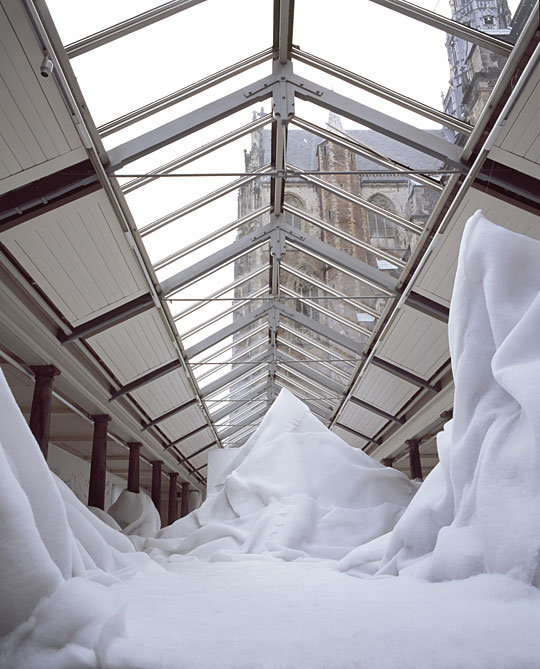

The installation was called ‘Voorbij de berg voorbij’ which means ‘Beyond the mountain beyond’ and was an experience, rather than an exhibition. Outside it was summer, inside people walked barefoot in a serene snowy landscape made of soft fiberfill. The lace church mirrored the city cathedral adjacent to the exhibition space, which could be see through the glass roof. Inside this cathedral one could visit a complementary show with my work. It hosted, amongst others, my ‘Hanging cathedral’, modelled after the cathedral of Sienna (Italy) and is made of pieces of lace glued together.
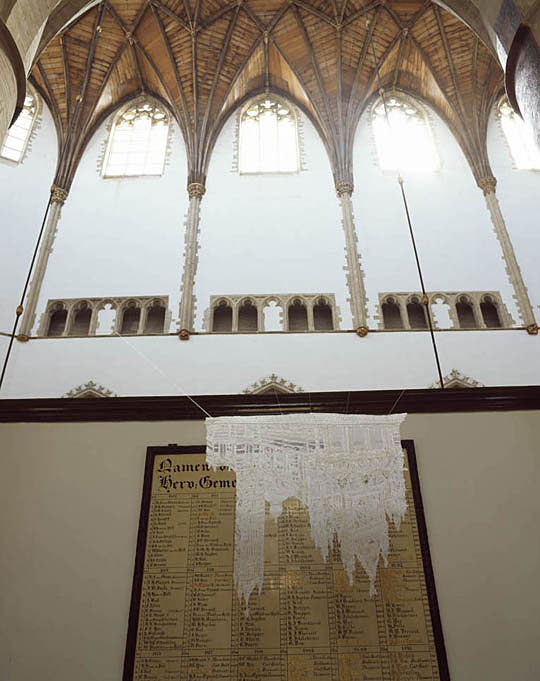
What currently inspires you and which other artists do you admire and why?
After years of working figuratively and using universal figures like churches, saints, mothers, babies and mountains, I am now studying the consoling qualities of abstract geometrical art and the golden ratio. It coincides nicely with a current commission for refurbishing an Islamic prayer room, where depicting human or animalistic figures is prohibited.
I’m reading loads of books on mosques, the golden ratio, nature and architecture, but I’m also looking at painters like Mark Rothko. I like the way he eliminates all superfluity and confronts viewers with the bare essence. His work is quiet but overwhelming – using only color and shape he gives the spectator an almost spiritual experience. I would like to be able to create an experience like that with minimal means.
I admire Ann Veronica Janssens for her ephemeral installations with light and fog. Her work is very minimal and poetical and has a great effect on people’s senses.
The ultimate quiet room
Tell us about a piece of work you have fond memories of and why?
‘Nest’, a room filling installation I made in my studio in 2004, is an absolute key work for me. My studio back then was a small former canteen, hidden in the top corner of a large factory hall. I took part in an open studio route, which means having hundreds of people in your private studio that want to have a look ‘behind the scenes’. I don’t like to be disturbed during the vulnerable stage of creating new work, so to me, participating feels like a (self-chosen) breach of my privacy. I pre-empted this by hiding my entire studio under layers of fiberfill.

The visitors reached this completely soft and white space by crossing the factory hall, which was full of loud art and theatrical performances, and then climbing up some small stairs. Upon entering the ‘Nest’ they automatically started whispering and walking very carefully. Some said it felt as if they had entered heaven. However, the room did not stay this pristine: 1,000 visitors in two days stained and wrinkled the white floor. The installation showed the impact the visitors had on my ‘tabula rasa’ but it also expressed my longing for the ultimate quiet room.
Years later, I got a great commission to refurbish a meditation center inside a hospital. This was an assignment with my name on it. It was a barbapapa-shaped room, with a concrete column in one corner, without windows and with cold artificial lighting and ditto interior. I used the absence of daylight to create a secluded world that was totally separated from the rest of the hospital.
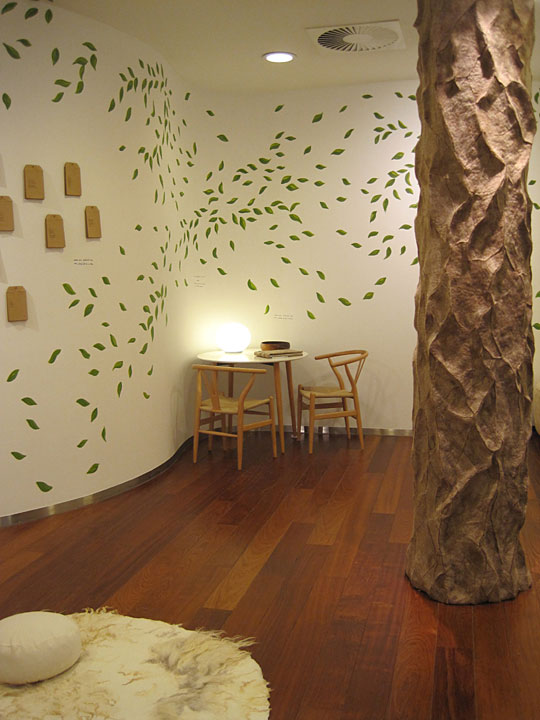
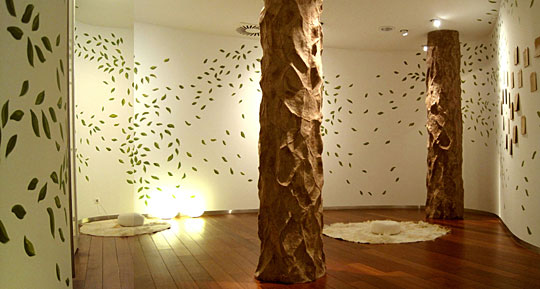
I redesigned the place with merely circular shapes for carpets, furniture and lamps. These correspond with the curved walls and make sure the energy in the room never stops moving. I applied only natural materials and colors. The client had provided me with a poem by Dutch poet Gerrit Komrij, called ‘Under the apple tree’. This was my inspiration to create an orchard like feeling with leaves painted on the walls and felted tree trunks. One trunk was made around the existing column, the other one was added to ‘break’ the space and make the room more exciting.
This commission taught me that, in contrast with what I believed at art school, I can do applied arts without compromising myself. In fact, it can be a win-win situation, as long as the assignment relates to the core of my work. And that is creating consolation.
Where can readers see your work this year?
Upcoming exhibitions
Haarlem (NL), De Vishal, group show with auction at May 18 2014
www.devishal.nl
London (UK), APT Gallery, “Fear and Reality of Motherhood” (later in 2014)
www.aptstudios.org/gallery
Work in commission
Refurbishment Meditation center (Stiltecentrum) in Spaarne Hospital Hoofddorp (NL)
Refurbishment of Muslim Prayer Room in a Hospital (later in 2014)
For more information please visit: www.simonedegroot.nl
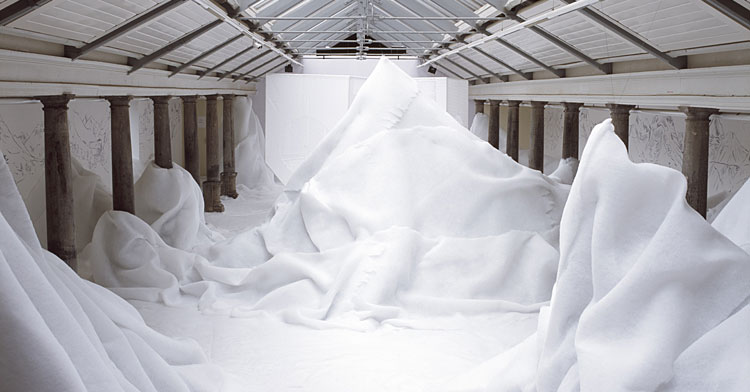

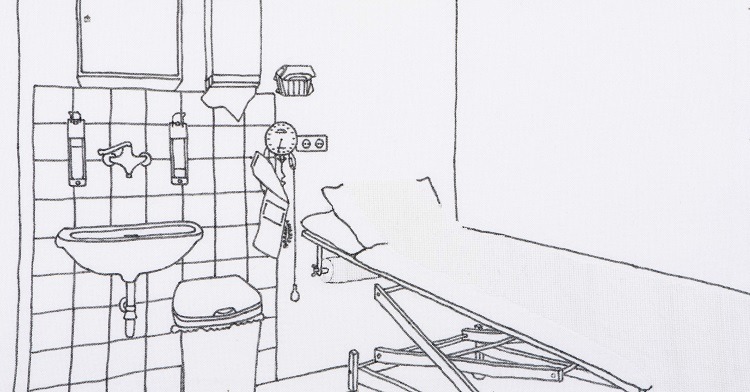
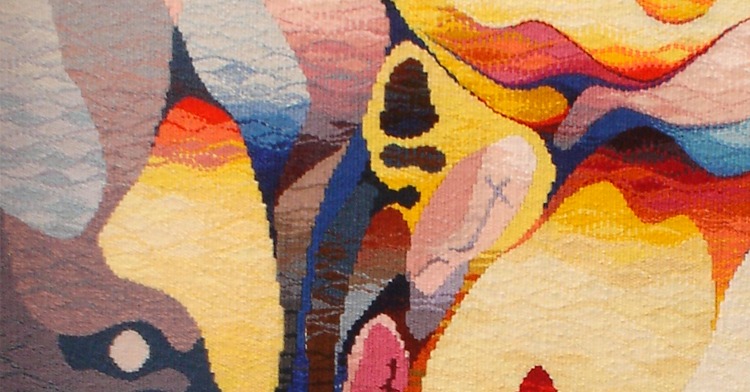
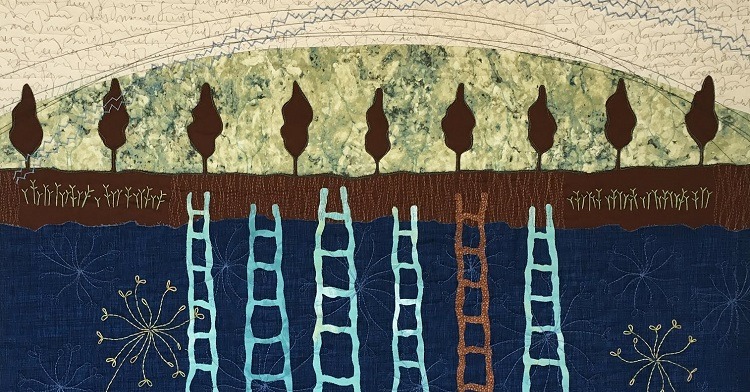
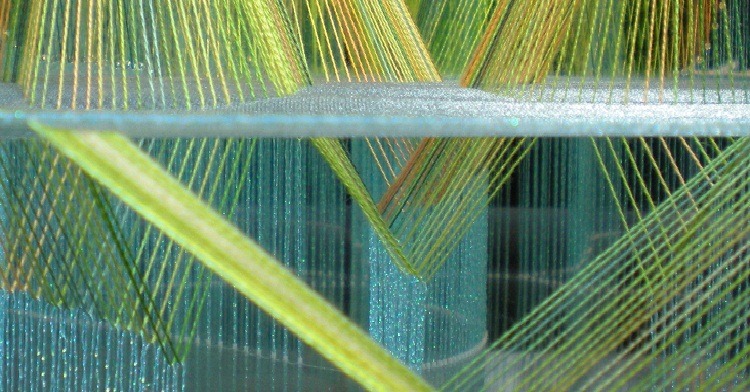
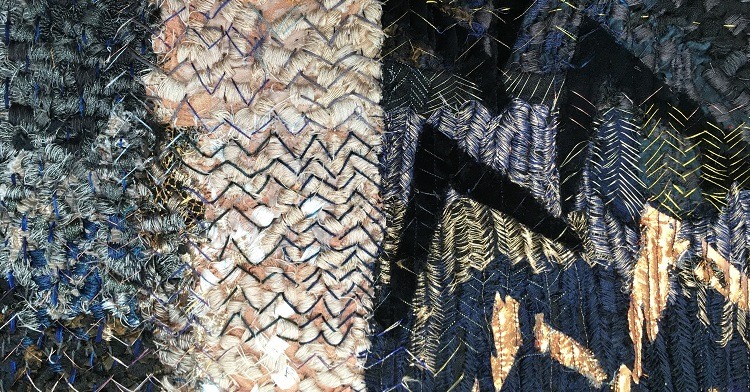
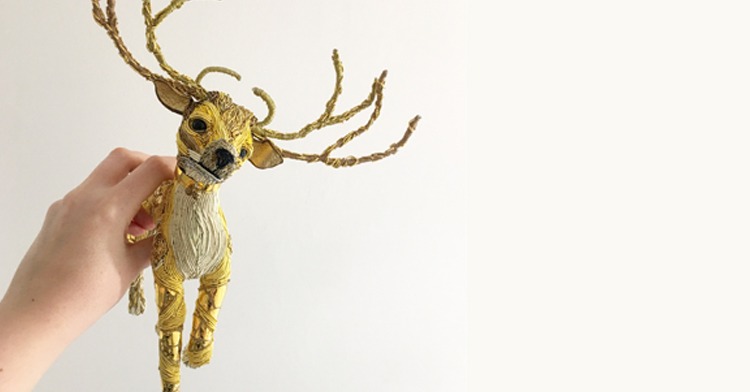
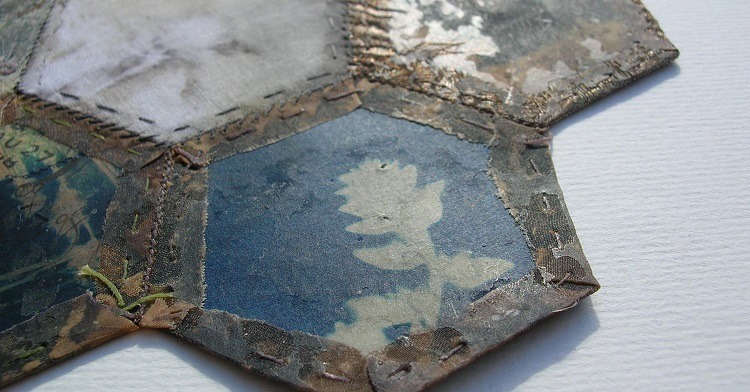
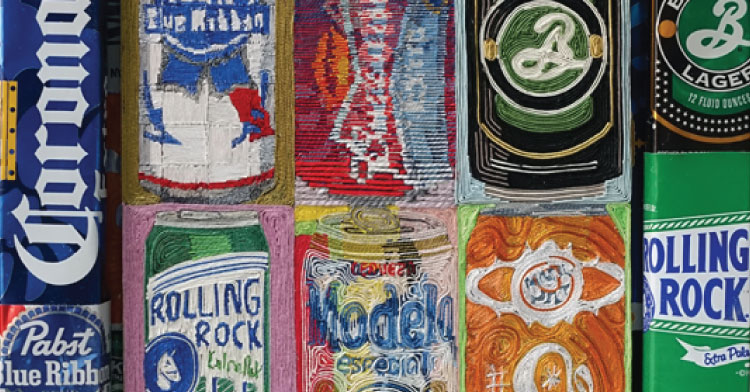
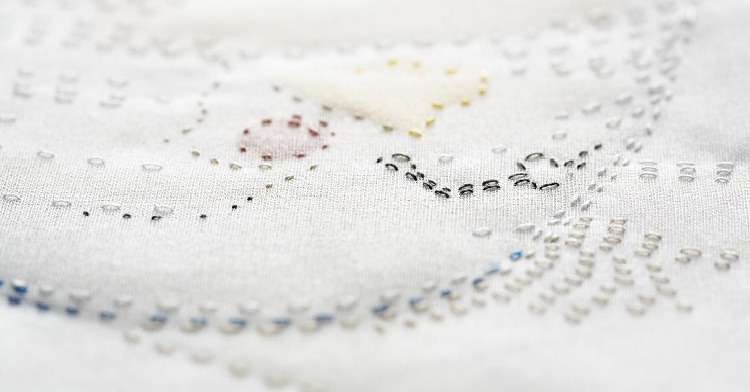
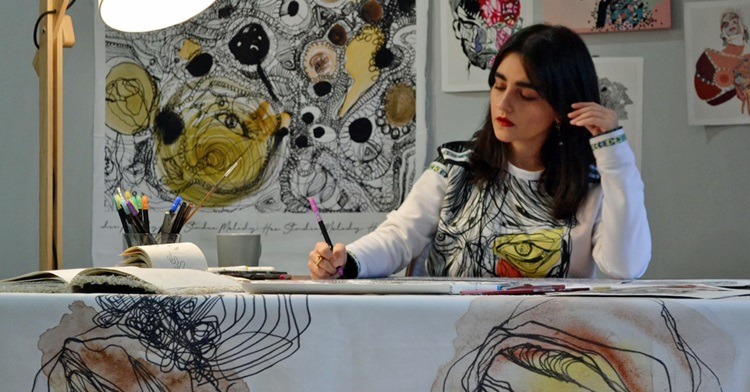
2 comments
arlee
oh MY. i would think it heaven to sit in one of those white rooms and just stitch, especially on red……..
Wonderful, reflective work.
Maria Wigley
Really inspiring. Thank you.